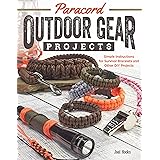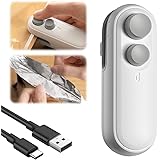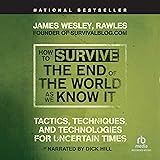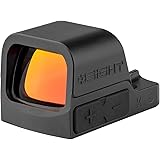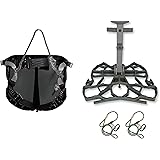When venturing into the great outdoors, preparedness is not just a recommendation; it’s a necessity. The wilderness, while beautiful, can be unpredictable, and having the right equipment can literally be the difference between a minor inconvenience and a life-threatening situation. This is precisely why understanding and assembling your personal cache of outdoor survival gear is paramount.
As the video above, “Top 10 Must Have Outdoor Survival Gear Part-1,” begins to outline, there are core items no adventurer should be without. Building upon that foundation, this guide delves deeper into the crucial aspects of selecting and utilizing these essential tools. Equipping yourself with the proper wilderness survival gear ensures you’re ready for whatever challenges nature might present.
The Indispensable Core of Wilderness Preparedness
Thinking about survival often conjures images of extreme situations, but even a simple day hike can turn perilous if you’re not adequately prepared. The philosophy behind essential outdoor gear revolves around addressing fundamental human needs in a crisis. We often consider the “Rule of Threes” in survival: three minutes without air, three hours without shelter in harsh conditions, three days without water, and three weeks without food. Your survival kit should directly tackle these critical timelines.
Having a comprehensive understanding of what constitutes truly vital outdoor survival gear helps you prioritize your purchases and packing. It’s not about having every gadget, but rather the right combination of reliable and multi-functional tools. This strategic approach to building your survival kit can significantly boost your confidence and capabilities when facing unexpected challenges.
Establishing Shelter in the Wild
Exposure to the elements is one of the leading causes of outdoor emergencies. A rapid change in weather, a wrong turn, or an injury can leave you stranded, making immediate access to shelter vital. Your outdoor survival gear should always include provisions for protection from wind, rain, and cold.
Imagine if a sudden storm hit while you were miles from your campsite. A lightweight tarp, often overlooked, can be quickly rigged into an effective makeshift shelter, protecting you from hypothermia. Emergency blankets, made from mylar, are incredibly compact but reflect up to 90% of your body heat, offering crucial warmth in a pinch.
Essential Shelter Items:
- Lightweight Tarp: Offers versatility for shelter, ground cover, or even a rain catchment system.
- Emergency Blanket (Mylar): Compact, waterproof, and excellent for retaining body heat.
- Cordage (Paracord): Indispensable for rigging shelters, repairs, and countless other tasks.
Mastering Firecraft for Survival
Fire is a cornerstone of wilderness survival, offering warmth, light, a means to cook food, purify water, and signal for help. Relying on a single method for fire starting is a common mistake; redundancy is key in your emergency kit. Modern advancements have made fire starting easier than ever, but practice remains crucial.
Consider a scenario where your lighter gets wet, or your matches are damp. A ferro rod, which creates a shower of sparks even when wet, becomes your most reliable friend. Coupled with appropriate tinder, it can quickly establish a life-saving flame. Knowing how to gather and prepare natural tinder, like dry leaves or birch bark, significantly enhances your success rate with any fire starter.
Key Fire Starting Tools:
- Ferro Rod (Fire Steel): Durable, waterproof, and capable of generating intense sparks.
- Waterproof Matches: A reliable backup, especially when paired with a striker.
- Lighter: Convenient and quick for easy fire starting, but susceptible to moisture.
- Tinder and Kindling: Pack some commercial fire starters or dryer lint for guaranteed ignition.
Ensuring Access to Potable Water
Water is more critical than food in short-term survival scenarios. Dehydration can severely impair judgment and physical capabilities, making any survival situation exponentially worse. Every piece of outdoor survival gear should address the need for safe drinking water, regardless of your planned activity.
Imagine being lost with dwindling water supplies. A portable water filter or purification tablets can transform questionable water sources into drinkable hydration. These essential items remove harmful bacteria, viruses, and protozoa, preventing debilitating illnesses that could further compromise your situation. Always carry at least one method, preferably two, to purify water.
Vital Water Purification Gear:
- Portable Water Filter: Removes bacteria and protozoa, offering a high volume of clean water.
- Water Purification Tablets: Lightweight, compact, and effective against a wide range of contaminants.
- Collapsible Water Bottle/Bladder: For carrying and collecting water.
Navigating Back to Safety
Disorientation is a real danger in unfamiliar terrain, especially when visibility is low or trails are poorly marked. Effective navigation tools are non-negotiable for any serious outdoor enthusiast. While modern GPS devices are powerful, a foundational understanding of traditional methods is invaluable when electronics fail.
Picture this: your phone battery dies, and your GPS unit loses signal deep in a canyon. A reliable map of the area and a compass, combined with the knowledge to use them, become your lifeline. Understanding how to orient a map and take a bearing is a fundamental skill that every person carrying outdoor survival gear should master. These tools don’t rely on batteries or satellites, making them consistently dependable.
Essential Navigation Tools:
- Topographic Map: Detailed, physical map of your area, ideally waterproof.
- Baseplate Compass: Learn to use it with your map.
- GPS Device (or Smartphone App): A useful aid, but never your sole navigation tool.
First Aid: Your Personal Lifesaver
Injuries can occur in even the most benign outdoor settings, ranging from minor cuts and blisters to more severe sprains or lacerations. A well-stocked first aid kit is an absolute must-have outdoor equipment item, prepared for treating a variety of ailments. It’s not enough to simply have a kit; you also need to know how to use its contents effectively.
Consider a scenario where someone in your group suffers a deep cut. Having antiseptic wipes, sterile dressings, and medical tape readily available can prevent infection and stabilize the injury until professional help arrives. Your first aid kit should be tailored to the length and remoteness of your trip, and all members of your party should know where it is located. It is prudent to include personal medications and any allergy-specific treatments as well.
Critical First Aid Kit Contents:
- Antiseptic Wipes and Hand Sanitizer: For cleaning wounds and hands.
- Sterile Gauze Pads and Adhesive Bandages: To cover and protect injuries.
- Medical Tape and Moleskin: For securing dressings and preventing blisters.
- Pain Relievers and Anti-inflammatories: Such as ibuprofen or acetaminophen.
- Allergy Medication: If anyone in your party has known allergies.
- Tweezers and Small Scissors: For splinter removal and cutting bandages.
Cutting Tools: The Multi-functional Workhorse
From preparing kindling for a fire to making precision cuts for first aid, a reliable cutting tool is an indispensable part of any outdoor survival gear list. These tools serve countless purposes, making them highly versatile assets in a wilderness setting. The choice between a fixed-blade knife, a folding knife, or a multi-tool often comes down to personal preference and the specific demands of your adventure.
Imagine needing to cut cordage, open packaging, or even prepare game in a survival situation. A sturdy knife with a full tang is a robust option that can handle significant stress without breaking. A multi-tool, meanwhile, offers an array of functions like pliers, saws, and screwdrivers, proving invaluable for repairs or smaller tasks. Carrying a sharpening stone or small sharpener can keep your edge keen for crucial moments.
Essential Cutting Tools:
- Fixed-Blade Knife: Strong, reliable, and excellent for heavy-duty tasks.
- Multi-Tool: Offers a variety of tools in a compact form, ideal for diverse situations.
- Folding Knife: A more compact option for everyday carrying, suitable for lighter tasks.


